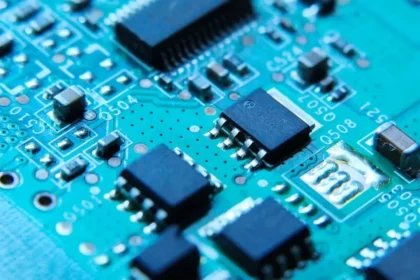Every few months, headlines warn of another semiconductor shortage whether it’s slowing down car production, delaying consumer gadgets, or making GPUs insanely expensive. Didn’t governments already pump billions into fixing this? The reality: chips are incredibly complex to manufacture, and the global supply chain is more fragile than most people realize. Here’s a breakdown of why shortages keep happening, and why the U.S. and EU still struggle to solve the problem.
What Chips Really Are
At the core, semiconductors are tiny slices of silicon that pack millions or billions of transistors. These transistors act as switches for all modern electronics, from iPhones to satellites. The catch? Building them requires ultra-pure materials, precision engineering at the nanometer scale, and equipment so specialized that only a handful of companies in the world make it.
Why Supply Chains Break
Chip production isn’t a one-country process. A single semiconductor might involve design in the U.S., lithography equipment from the Netherlands, wafer manufacturing in Taiwan, and packaging in Malaysia. If even one link breaks like a factory shutdown, shipping delay, or export ban the whole chain stalls. That’s why a flood in Thailand or an energy crunch in China can ripple into chip shortages worldwide.
COVID Exposed the Weakness
The pandemic made this painfully clear. When carmakers canceled orders in 2020, chip fabs shifted to consumer electronics. By the time auto demand bounced back, fabs were fully booked. Cars now require dozens of chips for sensors, EV batteries, and infotainment—so delays became massive. Even today, automakers are still trying to diversify suppliers to avoid repeating that mistake.
The Role of Geopolitics
Semiconductors aren’t just about business they’re national security assets. The U.S. relies heavily on Taiwan’s TSMC, which makes over 50% of the world’s advanced chips. China is investing heavily to catch up. The EU has its Chips Act, and the U.S. its CHIPS and Science Act, funneling billions into local fabs. But building advanced fabs takes 5-7 years, so the short-term pain remains.
Why Making Chips Is So Hard
Here’s the kicker: even if the U.S. or EU builds more fabs, shortages may not go away quickly. That’s because:
- Each chip type has different supply dynamics car microcontrollers aren’t the same as AI GPUs.
- The equipment bottleneck is real: ASML in the Netherlands is the only company making extreme ultraviolet (EUV) lithography machines.
- Chips need rare materials like neon gas (mainly from Ukraine) and palladium (from Russia) making them vulnerable to geopolitical shocks.
Why Shortages Keep Coming Back
Think of chips like a just-in-time system with zero slack. When demand spikes (say, AI servers or EVs), fabs can’t instantly expand capacity. When natural disasters or trade wars hit, supply shrinks fast. Add to that the cyclic nature of chip markets booms and busts driven by demand forecasts and shortages are basically baked into the system.
What the U.S. and EU Are Doing
The U.S. CHIPS Act has already led to projects like Intel’s Ohio fabs and TSMC’s Arizona site. The EU Chips Act is funding fabs in Germany, Italy, and France. But these projects focus on resilience, not immediate relief. Even when finished, they’ll cover only part of global demand. In the short run, diversification and better forecasting are the only real tools.
The Future Outlook
Analysts expect supply crunches will keep happening, especially for high-performance chips (AI, graphics, automotive). Companies are responding with dual-sourcing, stockpiling critical chips, and redesigning products to use less advanced nodes when possible. Long-term, a balance of U.S., EU, and Asian fabs might stabilize supply, but costs will rise as redundancy replaces efficiency.
My Take
I think chip shortages aren’t going away anytime soon, no matter how much money gets poured into fabs. Semiconductors are too global, too complex, and too tightly coupled to market cycles. What will change is how companies and countries prepare: more buffer stock, more local fabs, and more strategic alliances. For everyday people, that means gadgets, cars, and GPUs will keep seeing price swings. The chip industry isn’t broken it’s just stretched to its absolute limits, and we’re all feeling the effects.






